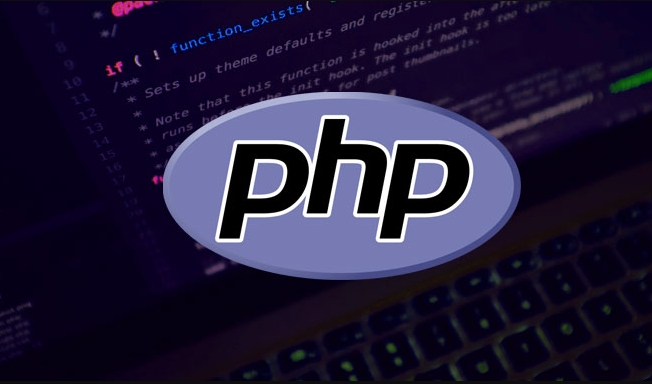To dynamically build a multi-dimensional PHP array, you must first clarify the structure, use loops to gradually add data, recursion can be used when processing nested relationships, and pay attention to references, key conflicts and performance issues. 1. Identify the target array structure, such as a menu containing subitems; 2. Use loop traversal data sources and insert each item into the correct position according to conditions; 3. For deep nested structures, automatically build the hierarchy using recursive functions; 4. Pay attention to avoid problems such as unrelease of references and repeated overwriting of key names; 5. Consider the performance under large data volumes, and use iteration or database grouping instead if necessary.

So you need to build a multidimensional PHP array dynamically — maybe based on user input, looping through data, or handling nested structures like categories and subcategories. The trick is understanding how arrays work in PHP and how to structure them properly as you go.

Understanding the Structure First
Before writing any code, it helps to know what kind of array structure you're aiming for. A multidimensional array is basically an array that contains one or more arrays inside it. For example:

$menu = [
'main' => [
'home' => ['url' => '/', 'label' => 'Home'],
'about' => ['url' => '/about', 'label' => 'About']
]
];You don't always have to predefine this structure. You can build it step by step using loops or conditional logic.
Using Loops to Build It Step by Step
Most of the time, dynamic arrays come from looping over some kind of dataset — like rows from a database or entries from a JSON file.

Let's say you have a list of menu items with parent-child relationships. Here's how you might build a multidimensional array from that:
$menuItems = [
['id' => 1, 'parent_id' => null, 'label' => 'Home', 'url' => '/'],
['id' => 2, 'parent_id' => null, 'label' => 'About', 'url' => '/about'],
['id' => 3, 'parent_id' => 2, 'label' => 'Our Team', 'url' => '/about/team'],
];
$menu = [];
foreach ($menuItems as $item) {
if ($item['parent_id'] === null) {
// This is a top-level item
$menu[$item['label']] = [
'url' => $item['url'],
'children' => []
];
} else {
// Loop through existing top-level items to find the parent
foreach ($menu as $key => &$parentItem) {
// You'd usually match IDs here, but this example uses label matching for simplicity
if ($key === 'About' && $item['parent_id'] == 2) {
$parentItem['children'][$item['label']] = [
'url' => $item['url']
];
}
}
}
}This is just a basic example. In real applications, you'd probably use IDs to map parent-child relationships more accurately.
Handling Deep Nesting with Recursion
If your data has multiple levels (like categories, subcategories, and sub-subcategories), recursion can help.
Here's a simple recursive function that builds a tree from flat data:
function buildTree(array $elements, $parentId = null) {
$branch = [];
foreach ($elements as $element) {
if ($element['parent_id'] == $parentId) {
$children = buildTree($elements, $element['id']);
if ($children) {
$element['children'] = $children;
}
$branch[$element['label']] = $element;
}
}
return $branch;
}
$menu = buildTree($menuItems);This way, no matter how deep your nesting goes, the function keeps calling itself until all levels are covered.
Some Common Gotchas
- Referencing issues : When looping and modifying arrays, especially with
&, make sure to unset references (unset($item)after a loop) to avoid unexpected behavior. - Key collisions : Be careful when using strings as keys. If two items have the same label, they'll overwrite each other unless you add extra checks or use numeric IDs instead.
- Performance : For very large datasets, recursion might not be the most efficient. In those cases, consider iterative approaches or database-level grouping.
That's basically how you do it. Whether you're building menus, settings trees, or complex forms, knowing how to dynamically create and manage multidimensional arrays in PHP opens up a lot of possibilities. It's not complicated once you get the hang of structuring and appending data correctly.
The above is the detailed content of how to dynamically create a multidimensional php array. For more information, please follow other related articles on the PHP Chinese website!

Hot AI Tools

Undress AI Tool
Undress images for free

Undresser.AI Undress
AI-powered app for creating realistic nude photos

AI Clothes Remover
Online AI tool for removing clothes from photos.

Clothoff.io
AI clothes remover

Video Face Swap
Swap faces in any video effortlessly with our completely free AI face swap tool!

Hot Article

Hot Tools

Notepad++7.3.1
Easy-to-use and free code editor

SublimeText3 Chinese version
Chinese version, very easy to use

Zend Studio 13.0.1
Powerful PHP integrated development environment

Dreamweaver CS6
Visual web development tools

SublimeText3 Mac version
God-level code editing software (SublimeText3)
 PHP Variable Scope Explained
Jul 17, 2025 am 04:16 AM
PHP Variable Scope Explained
Jul 17, 2025 am 04:16 AM
Common problems and solutions for PHP variable scope include: 1. The global variable cannot be accessed within the function, and it needs to be passed in using the global keyword or parameter; 2. The static variable is declared with static, and it is only initialized once and the value is maintained between multiple calls; 3. Hyperglobal variables such as $_GET and $_POST can be used directly in any scope, but you need to pay attention to safe filtering; 4. Anonymous functions need to introduce parent scope variables through the use keyword, and when modifying external variables, you need to pass a reference. Mastering these rules can help avoid errors and improve code stability.
 How to handle File Uploads securely in PHP?
Jul 08, 2025 am 02:37 AM
How to handle File Uploads securely in PHP?
Jul 08, 2025 am 02:37 AM
To safely handle PHP file uploads, you need to verify the source and type, control the file name and path, set server restrictions, and process media files twice. 1. Verify the upload source to prevent CSRF through token and detect the real MIME type through finfo_file using whitelist control; 2. Rename the file to a random string and determine the extension to store it in a non-Web directory according to the detection type; 3. PHP configuration limits the upload size and temporary directory Nginx/Apache prohibits access to the upload directory; 4. The GD library resaves the pictures to clear potential malicious data.
 Commenting Out Code in PHP
Jul 18, 2025 am 04:57 AM
Commenting Out Code in PHP
Jul 18, 2025 am 04:57 AM
There are three common methods for PHP comment code: 1. Use // or # to block one line of code, and it is recommended to use //; 2. Use /.../ to wrap code blocks with multiple lines, which cannot be nested but can be crossed; 3. Combination skills comments such as using /if(){}/ to control logic blocks, or to improve efficiency with editor shortcut keys, you should pay attention to closing symbols and avoid nesting when using them.
 How Do Generators Work in PHP?
Jul 11, 2025 am 03:12 AM
How Do Generators Work in PHP?
Jul 11, 2025 am 03:12 AM
AgeneratorinPHPisamemory-efficientwaytoiterateoverlargedatasetsbyyieldingvaluesoneatatimeinsteadofreturningthemallatonce.1.Generatorsusetheyieldkeywordtoproducevaluesondemand,reducingmemoryusage.2.Theyareusefulforhandlingbigloops,readinglargefiles,or
 Tips for Writing PHP Comments
Jul 18, 2025 am 04:51 AM
Tips for Writing PHP Comments
Jul 18, 2025 am 04:51 AM
The key to writing PHP comments is to clarify the purpose and specifications. Comments should explain "why" rather than "what was done", avoiding redundancy or too simplicity. 1. Use a unified format, such as docblock (/*/) for class and method descriptions to improve readability and tool compatibility; 2. Emphasize the reasons behind the logic, such as why JS jumps need to be output manually; 3. Add an overview description before complex code, describe the process in steps, and help understand the overall idea; 4. Use TODO and FIXME rationally to mark to-do items and problems to facilitate subsequent tracking and collaboration. Good annotations can reduce communication costs and improve code maintenance efficiency.
 How to access a character in a string by index in PHP
Jul 12, 2025 am 03:15 AM
How to access a character in a string by index in PHP
Jul 12, 2025 am 03:15 AM
In PHP, you can use square brackets or curly braces to obtain string specific index characters, but square brackets are recommended; the index starts from 0, and the access outside the range returns a null value and cannot be assigned a value; mb_substr is required to handle multi-byte characters. For example: $str="hello";echo$str[0]; output h; and Chinese characters such as mb_substr($str,1,1) need to obtain the correct result; in actual applications, the length of the string should be checked before looping, dynamic strings need to be verified for validity, and multilingual projects recommend using multi-byte security functions uniformly.
 Quick PHP Installation Tutorial
Jul 18, 2025 am 04:52 AM
Quick PHP Installation Tutorial
Jul 18, 2025 am 04:52 AM
ToinstallPHPquickly,useXAMPPonWindowsorHomebrewonmacOS.1.OnWindows,downloadandinstallXAMPP,selectcomponents,startApache,andplacefilesinhtdocs.2.Alternatively,manuallyinstallPHPfromphp.netandsetupaserverlikeApache.3.OnmacOS,installHomebrew,thenrun'bre
 Learning PHP: A Beginner's Guide
Jul 18, 2025 am 04:54 AM
Learning PHP: A Beginner's Guide
Jul 18, 2025 am 04:54 AM
TolearnPHPeffectively,startbysettingupalocalserverenvironmentusingtoolslikeXAMPPandacodeeditorlikeVSCode.1)InstallXAMPPforApache,MySQL,andPHP.2)Useacodeeditorforsyntaxsupport.3)TestyoursetupwithasimplePHPfile.Next,learnPHPbasicsincludingvariables,ech






